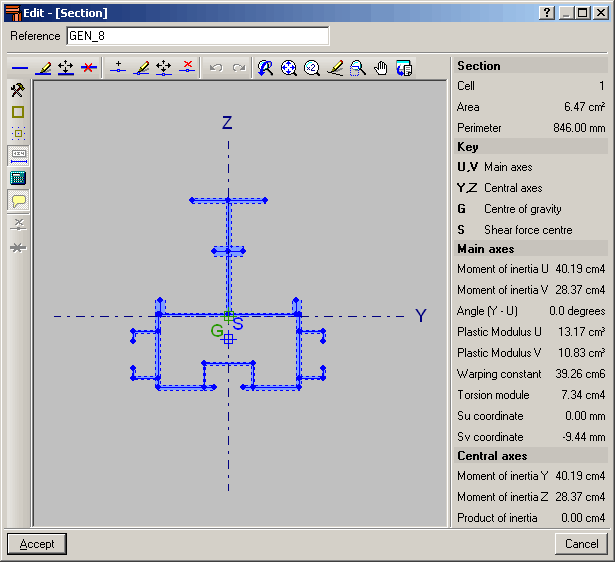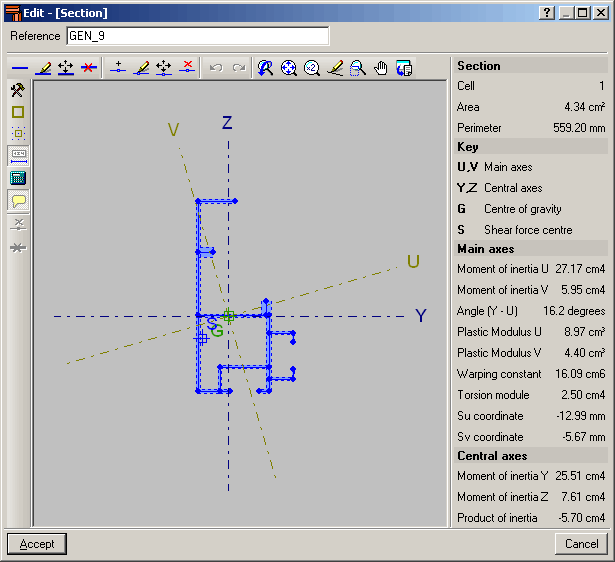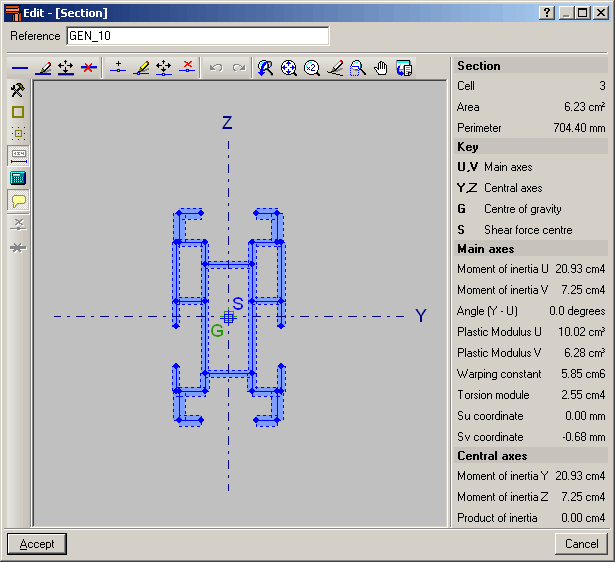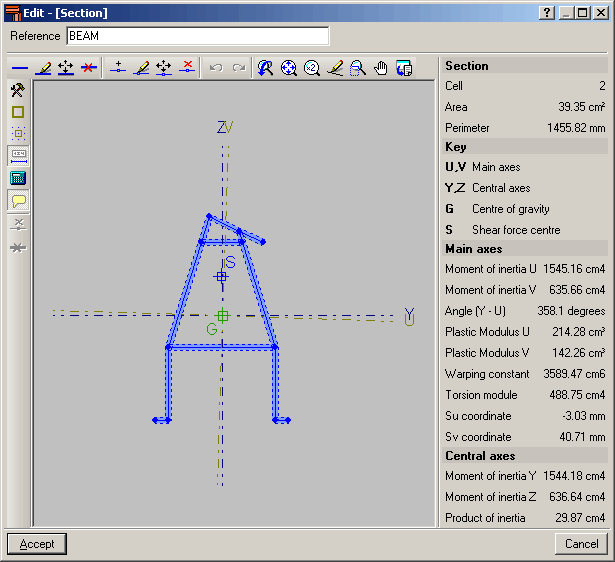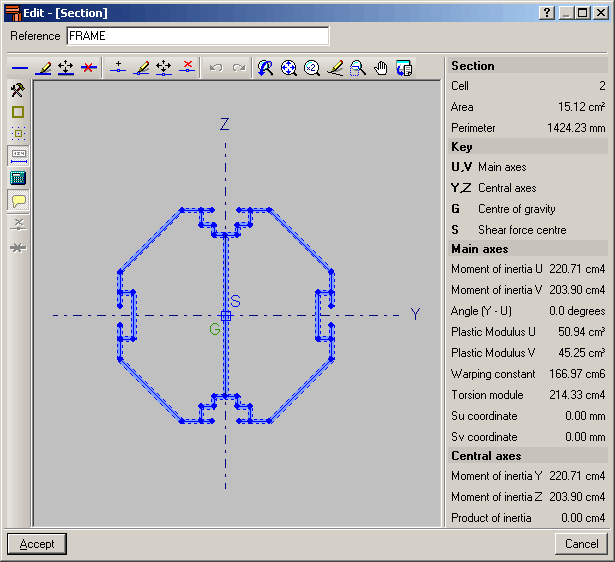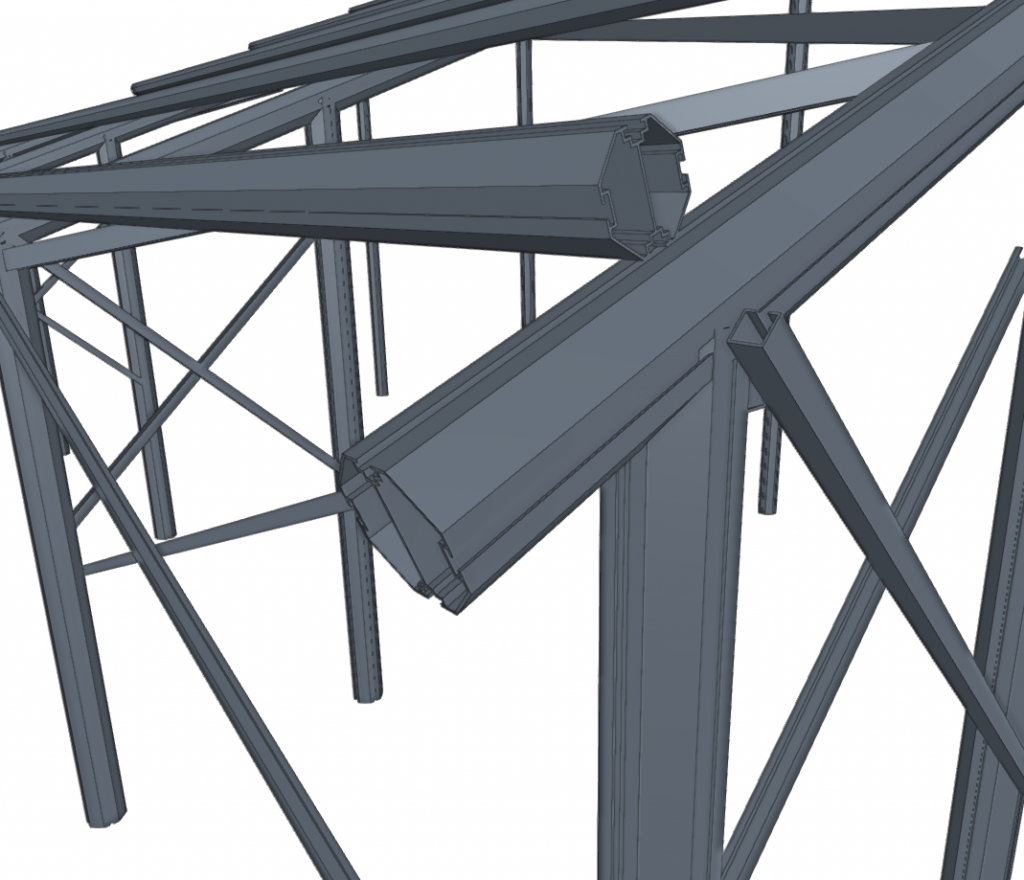Special extruded aluminium sections
The aluminium extrusion process allows both standard transverse aluminium alloy sections and well as those with specific designs to be produced. As of previous versions, the program has allowed users to design structures using standard extruded aluminium sections, i.e. those that are usually found in manufacturers' catalogues. As of version 2011.a, the Extruded aluminium section editor has been added as a new feature, which facilitates the design and check of aluminium alloy bars with specific transverse sections.
The Special aluminium section option has been included in the Describe dialogue box (Bar menu > Describe > select the bar on screen > right click with mouse button > Special aluminium section). When clicking this button, a dialogue box opens with options for creating, copying, editing and managing a library of special extruded aluminium sections. Using the Create button (or Edit, once special sections have been defined), the extruded aluminium section editor is displayed on screen.
The specific design of the section improves the geometry of the transverse sections, allowing for an optimum combination that simplifies the construction process of the structure, with mechanical properties that maximise the resistance effectiveness with minimum weight. The program also allows stiffened sections to be obtained without having to use composite sections, thus avoiding having to weld or bolt the components.
Using the extruded aluminium sections editor, any section can be created: both open and with cells, consisting of thin-walled flat elements, and then used in the structural analysis to proceed with the resistance analysis, including the generation of check reports.
The editor offers information on the mechanical and torsional properties of the gross section, required for the structural analysis, which is updated after any modifications have been carried out. The values of the area, moments and products of inertia, torsion module, warping constant and shear centre coordinates, among others, are displayed.
The calculation of the resistance of the sections created with the editor against the forces derived from the structural analysis incorporates an automatic calculation of the section’s susceptibility against the local buckling of the thin-walled elements making up the transverse section, assuming each one buckles individually. In order to consider any other buckling mode, it is possible to edit the local buckling coefficient that affects the slenderness parameter of each element. The classification of the section is carried out based on the previous calculation and with it, the estimation of the effective, elastic or plastic characteristics to be used in the resistance checks is made, as necessary.
The program also allows plastic shear areas to be obtained, as well as the reductions that, due to the tangential stresses originated by the torsional moment and shear forces, are produced in the resistances against normal forces: axial forces and bending moments.


